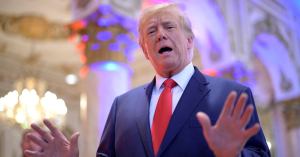Amidst much discussion about a second stimulus package, another deadline came and went without Congress agreeing on a plan. As a result, President Donald Trump took matters into his own hands by issuing an executive order to extend several economic relief programs on Saturday. Although, as many experts and lawmakers have pointed out, there are some issues associated with the president’s latest move.
Trump’s executive order called for an extension of unemployment benefits, a deferment for student loans, and, most controversially, a payroll tax cut, per Market Watch. Lawmakers on both sides of the aisle have criticized the president for using his executive privilege in this regard, with Republican Senator Ben Sasse of Nebraska even calling Trump’s move “unconstitutional slop.” He added, “President Obama did not have the power to unilaterally rewrite immigration law with DACA and President Trump does not have the power to unilaterally rewrite the payroll tax law.” According to Market Watch, experts believe that the president’s executive order actually raised more questions due to the wording of his memorandum. Trump’s executive order will allow companies to avoid paying payroll taxes. But, analysts have said that workers will still have to pay those taxes by April 15 of next year.
Videos by PopCulture.com
The other problem with his executive order ties back to the unemployment benefits that he called for. In his memo, eligible workers could receive an additional $400 weekly in federal unemployment insurance through Dec. 6. However, the program could possibly only last for four weeks until it runs out of money. It will also be an uphill battle even to get the program running. Based on Trump’s memo, this weekly unemployment supplement will be funded with $44 billion from the Department of Homeland Security’s disaster relief fund. Governors will also have to work with the Federal Emergency Management Administration (FEMA) to manage this initiative. States will be tasked with kicking in $100 of this $400 total, with the federal government’s contribution capped at $300. The other caveat is that jobless individuals will have to receive $100 from their state before they can receive the $300 from the federal government.
States will have to set up this program from scratch, which is something that experts have said could take months. In other words, Americans could be waiting some time until they are even able to receive their $400 weekly supplement. And once they do, there’s no telling how long they will be able to receive those funds before the program runs out of money.




